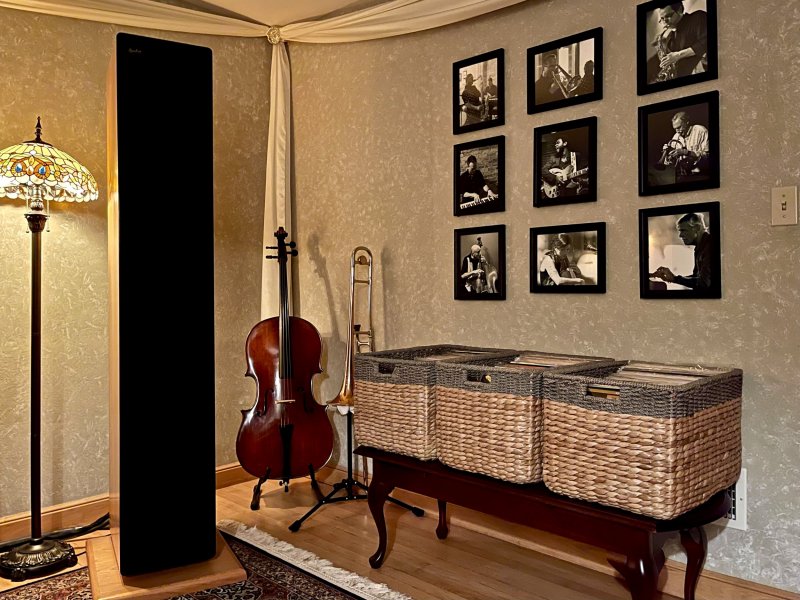This one is on audio markt for 8,5 K ."reasonably priced restored EMT" won´t happen
The restoration looks to be well done.
950 s arent that expensive
This one is on audio markt for 8,5 K ."reasonably priced restored EMT" won´t happen
Have you now. Sounds like fun. Must try itI´ve had many hours on my back under the LP12 hanging between 2 dining chairs...never owned one myself though
If it’s Motown on it, it’s worth it!I have a good phonostage now, CAT legend so i could buy a TT.
If i did id buy a reasonably priced restored EMT probably .
Ps may be it has a built in phono , dont know
View attachment 85289
Very nice.in 2019 I felt in love with the new Kuzma Stabi R turntable, now I am setting up the
Kuzma Stabi R wood version
with
Sorane TA-1 and TA-1L tonearm
and as a first shot
Phasemation cartridges.
As Phonostage my current favorite
RCM "The Big Phono"
will temporary connect them to my Preamp
View attachment 85284View attachment 85283View attachment 85282View attachment 85285
LP12 is everything but fun imo....MIckey Mouse playerHave you now. Sounds like fun. Must try it
I was asked to setup an lp12 for a client. It had been a while but not my first time by any stretch. While you can get decent sound out of one I agree- so many other better builds out there...LP12 is everything but fun imo....MIckey Mouse player
Before adjusting the pickup and tonearm, you should first check LP 12 whether the sub-chassis is working properly. then it also works with the soundI was asked to setup an lp12 for a client. It had been a while but not my first time by any stretch. While you can get decent sound out of one I agree- so many other better builds out there...
I thought the purpose of this thread was to share images of turntables that members are enjoying in their system.I was asked to setup an lp12 for a client. It had been a while but not my first time by any stretch. While you can get decent sound out of one I agree- so many other better builds out there...
Everything is OK.Didn't mean any disrespect. Apologies for that.
Hello Solypsa,Didn't mean any disrespect. Apologies for that.
Hello Stephan,Before adjusting the pickup and tonearm, you should first check LP 12 whether the sub-chassis is working properly. then it also works with the sound
There are 2 types of setting, static and dynamic. With the static setting, the plate does not rotate during the setting, with the dynamic setting it rotates.
I prefer the dynamic one because it is more precise. Caution, there are approx. 110V at the motor terminals.
The LP12 frame must be perfectly leveled, i.e. really stand straight and not wobble.
Next, it is necessary to put weight on the plate. A tool (round spirit level) from Mana Audio UK, the Mana Sprit Level, has proven to be best. It is placed on the plate axis and weighs about 100 grams.
Now it is possible to adjust the height of the plate exactly while walking with the help of the screws underneath the springs.
This height changes when the springs are turned and must therefore be readjusted.
The point at which the plate is tapped to check the bounce effect lies on an imaginary axis between the tonearm pivot point and the center of the plate. The point is approx. 3-4 cm away from the plate area (towards the tonearm axis). By gently tapping it, you can now observe how the plate swings.
If it is set incorrectly, sideways rocking movements occur, which can be changed by turning the springs. You turn a pen and watch the result.
Attention: Always turn the spring with the rubber in which it is mounted and never just the spring alone! I.e. turn the spring very high up.
If the swing has changed, check whether the plate is still level and readjust if necessary.
Repeat this procedure several times. However, never adjust all three springs. Over time you will get a feeling for the effect on the swing of the individual springs.
Concentrate on only two springs and adjust them to one another so that they do not swing into rocking movements. Only when that is ok, adjust the 3rd spring.
Sometimes it is necessary to repeat the procedure several times until all 3 springs only allow one movement (piston movement).
P.S
a linn belongs on such a table, with adjustable spikes screwed into the feet

That's a great looking custom Thorens! I also like the photographs you have there. Did you happen to take those shots?Back on topic modified diy plinth thorens td 124 mk IView attachment 85428View attachment 85429


